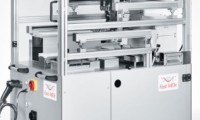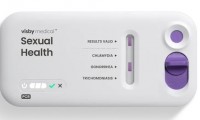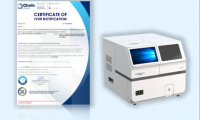-
World’s First Low-Cost, High-Throughput, Near-Patient Molecular Diagnostic Test System Dramatically Reduces Wait Times
- Source: drugdu
- 111
- February 29, 2024
-
Portable Rapid PCR Diagnostic to Detect Gonorrhea and Antibiotic Susceptibility
- Source: drugdu
- 151
- February 16, 2024
-
Electrochemical Sensors with Next-Generation Coating Advances Precision Diagnostics at POC
- Source: https://www.labmedica.com/clinical-chemistry/articles/294800220/electrochemical-sensors-with-next-generation-coating-advances-precision-diagnostics-at-poc.html
- 124
- February 14, 2024
-
Novel Urinary Biomarkers with Improved Diagnostic Performance to Enable Early Detection of Lupus Nephritis
- Source: drugdu
- 90
- January 25, 2024
-
Ultrasensitive Molecular Diagnostic Tools Detect Asymptomatic Malaria
- Source: drugdu
- 168
- January 22, 2024
-
Novel Diagnostic Combines Inhalable Sensors with Urine Test for Early Lung Cancer Detection
- Source: drugdu
- 93
- January 10, 2024
-
AMP Publishes Best Practice Guidance for Slice Testing Approach in Diagnostics
- Source: drugdu
- 137
- December 29, 2023
-
Fosun Diagnostics’ Fully Automated Chemiluminescence Immunoassay Analyzer F-i1000 Obtains EU IVDR Certification
- Source: drugdu
- 105
- December 29, 2023
-
New Sample Preparation Solutions Simplify and Automate Respiratory Diagnostic Testing
- Source: drugdu
- 111
- December 15, 2023
your submission has already been received.
OK
Subscribe
Please enter a valid Email address!
Submit
The most relevant industry news & insight will be sent to you every two weeks.













